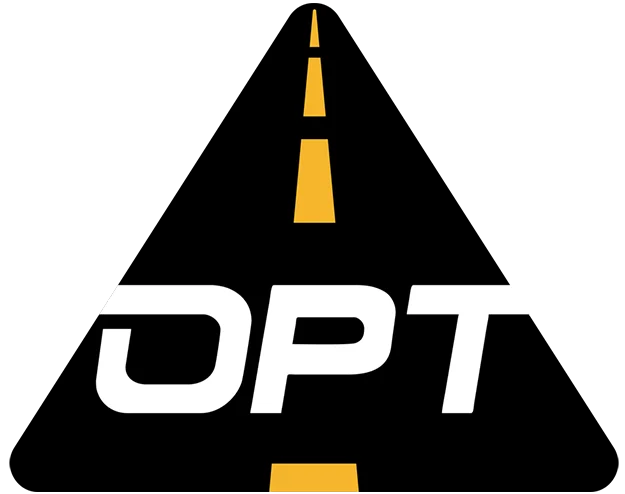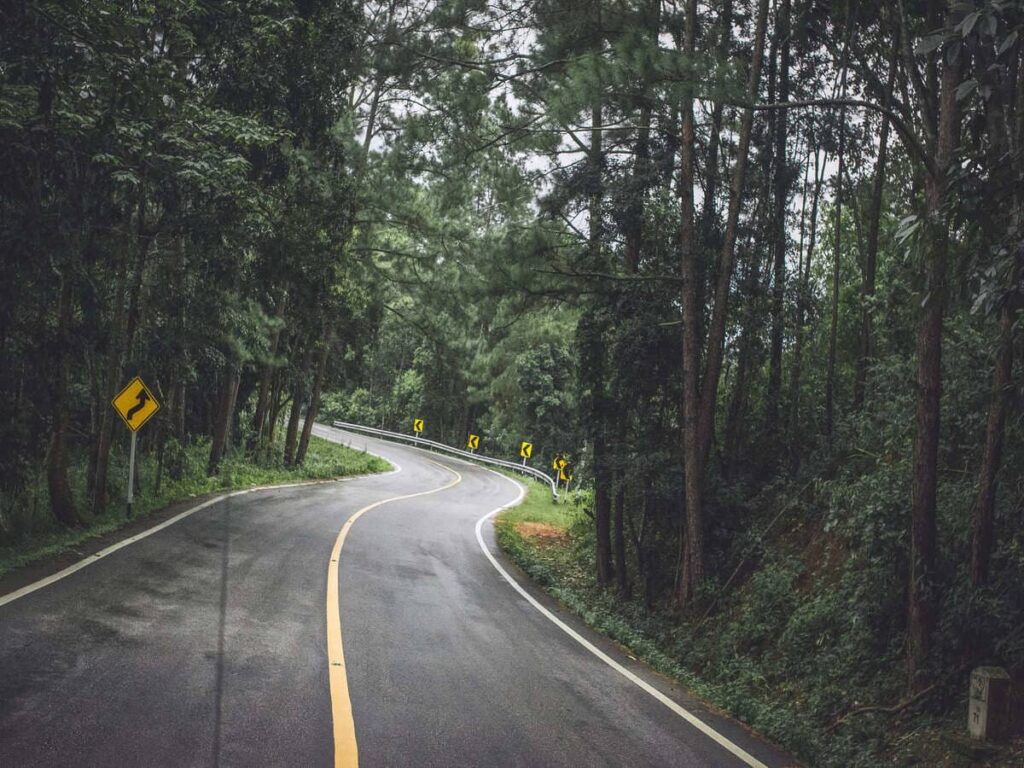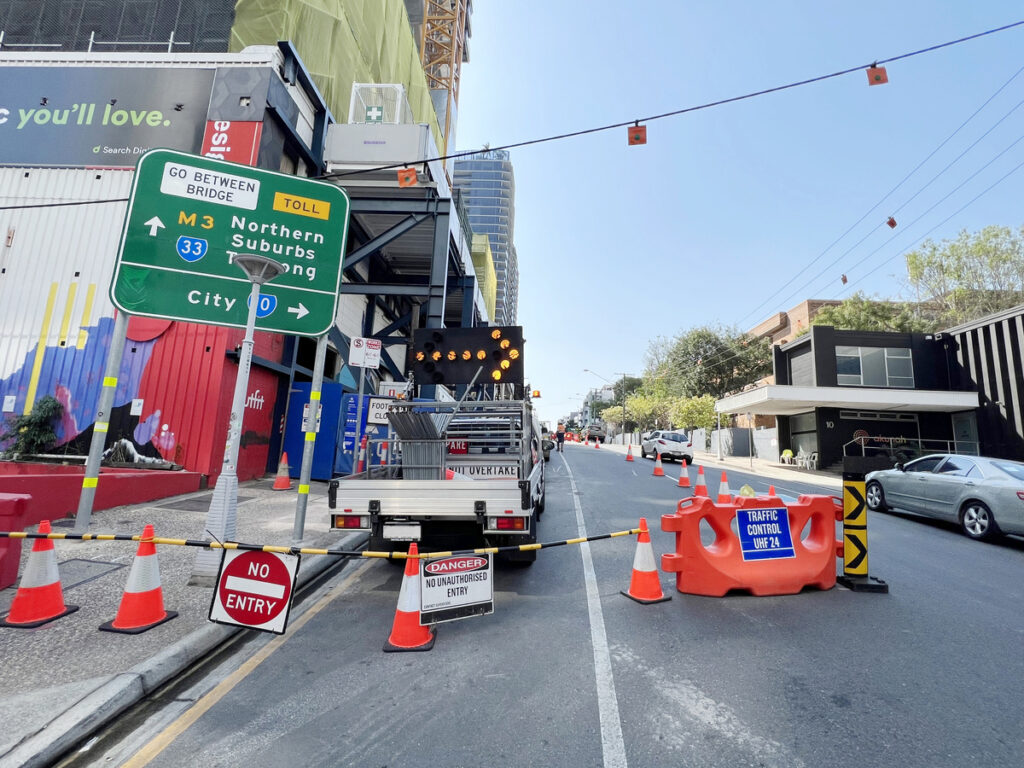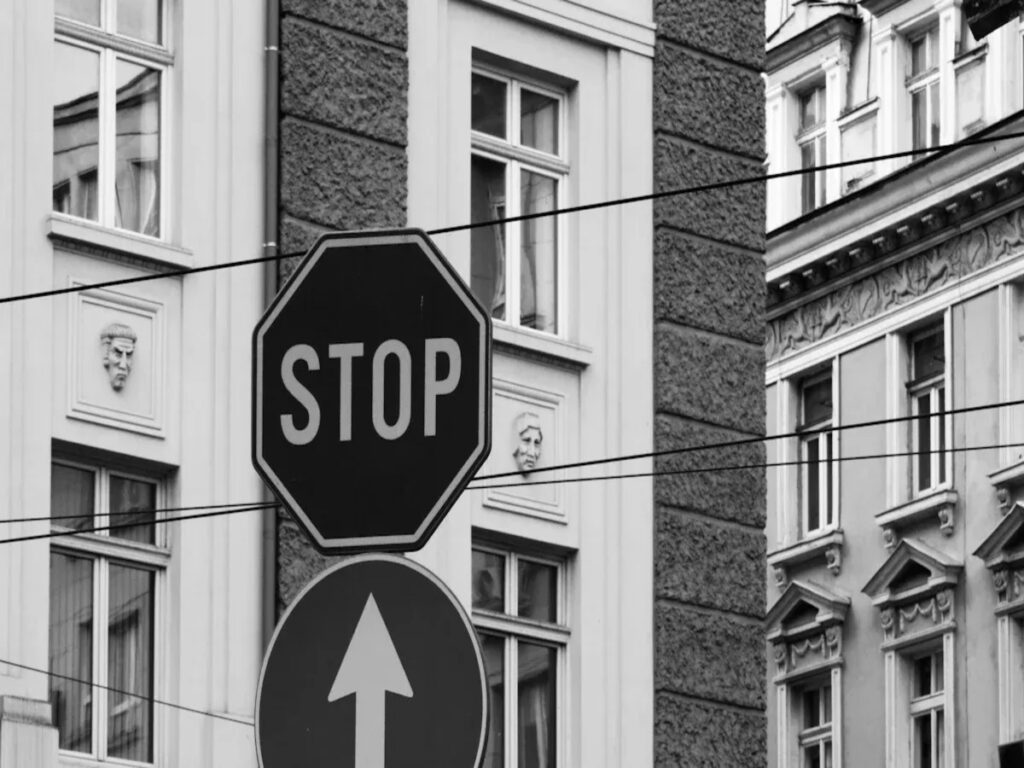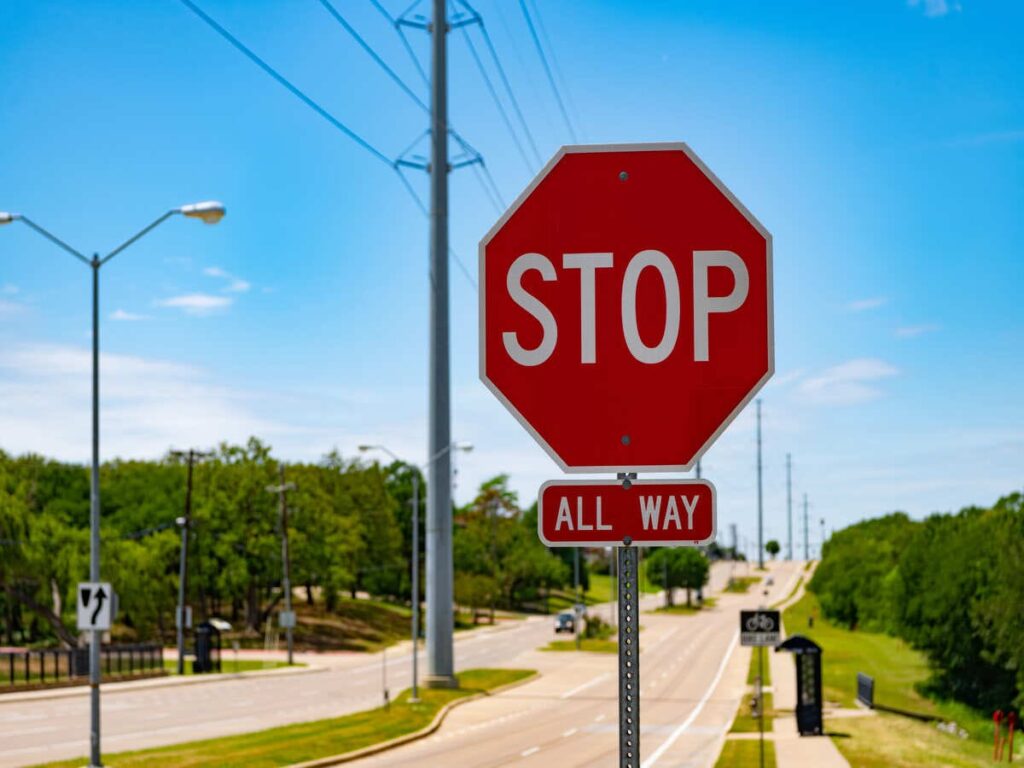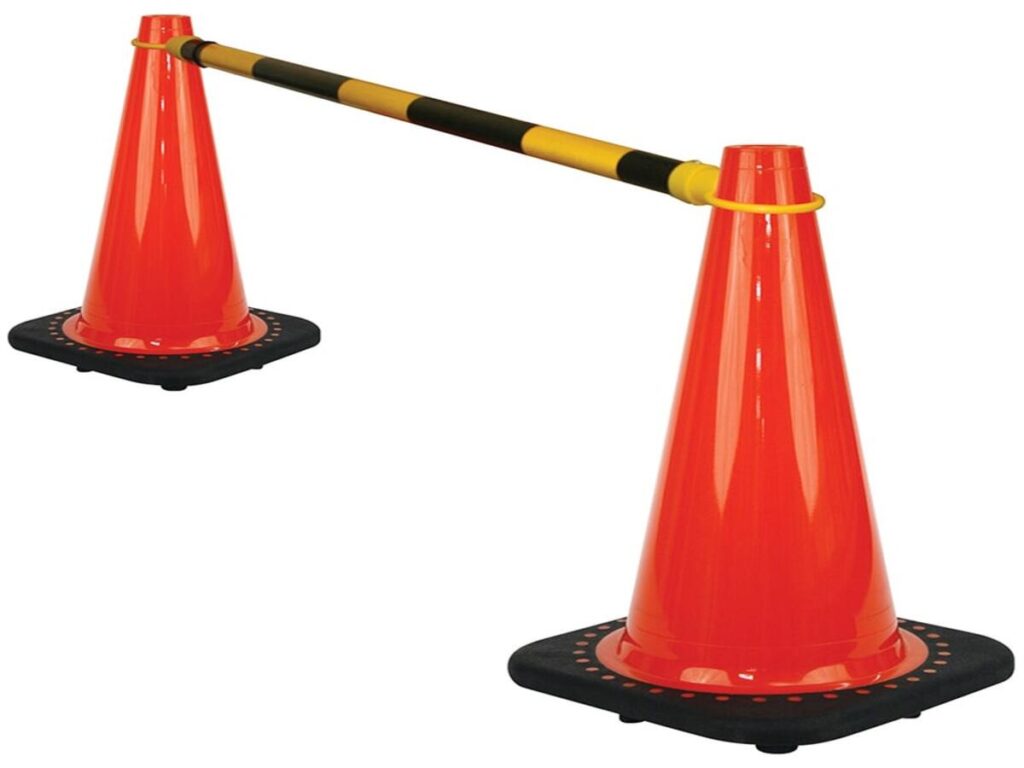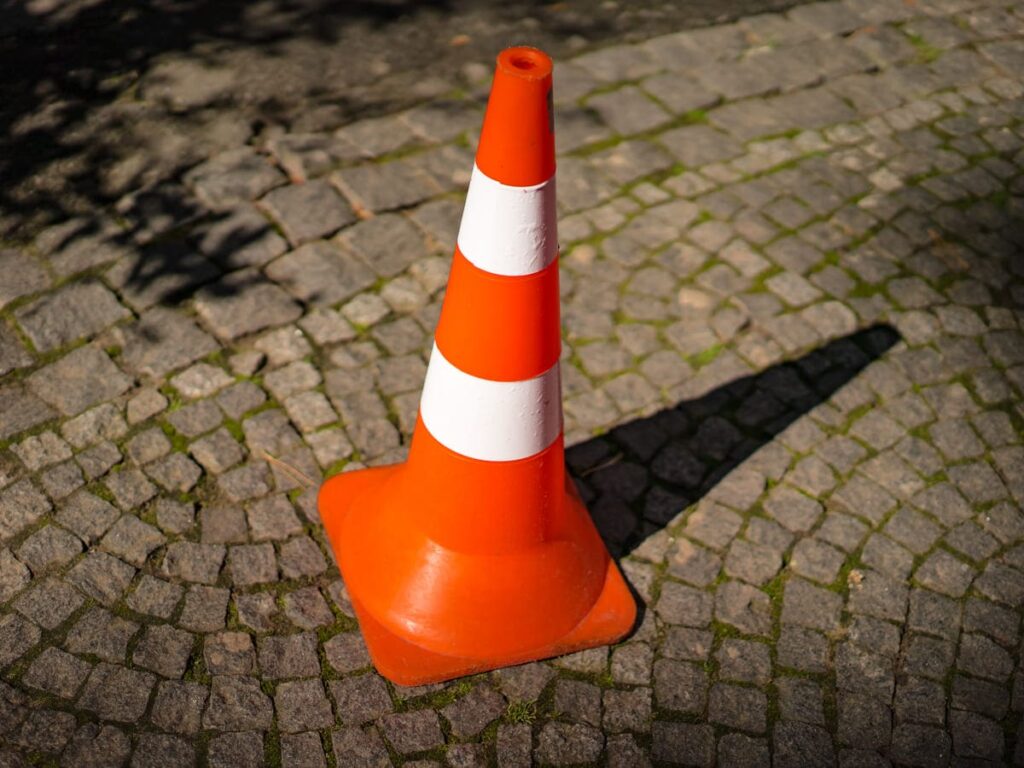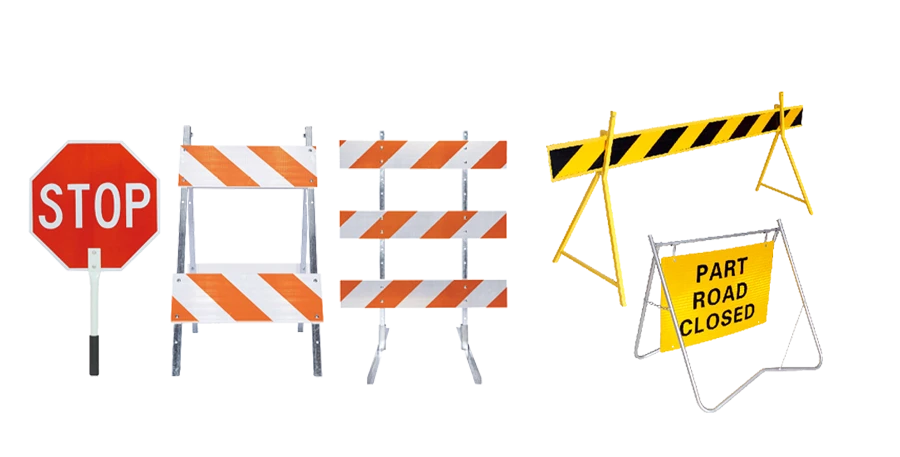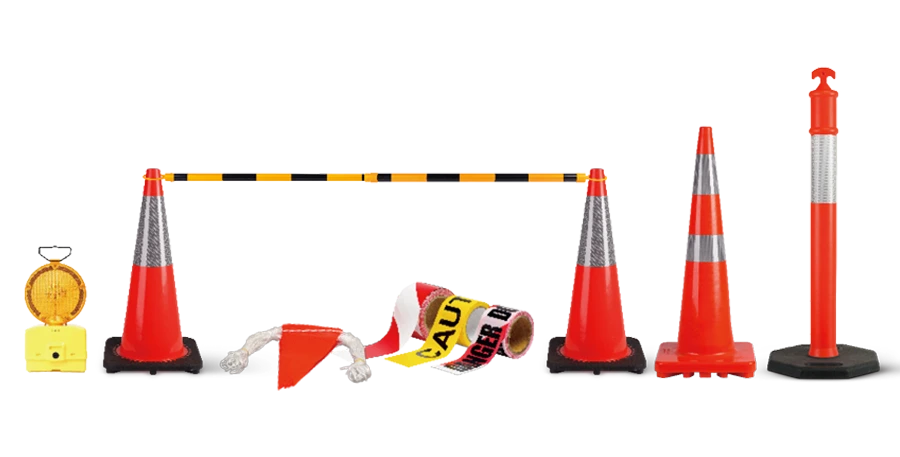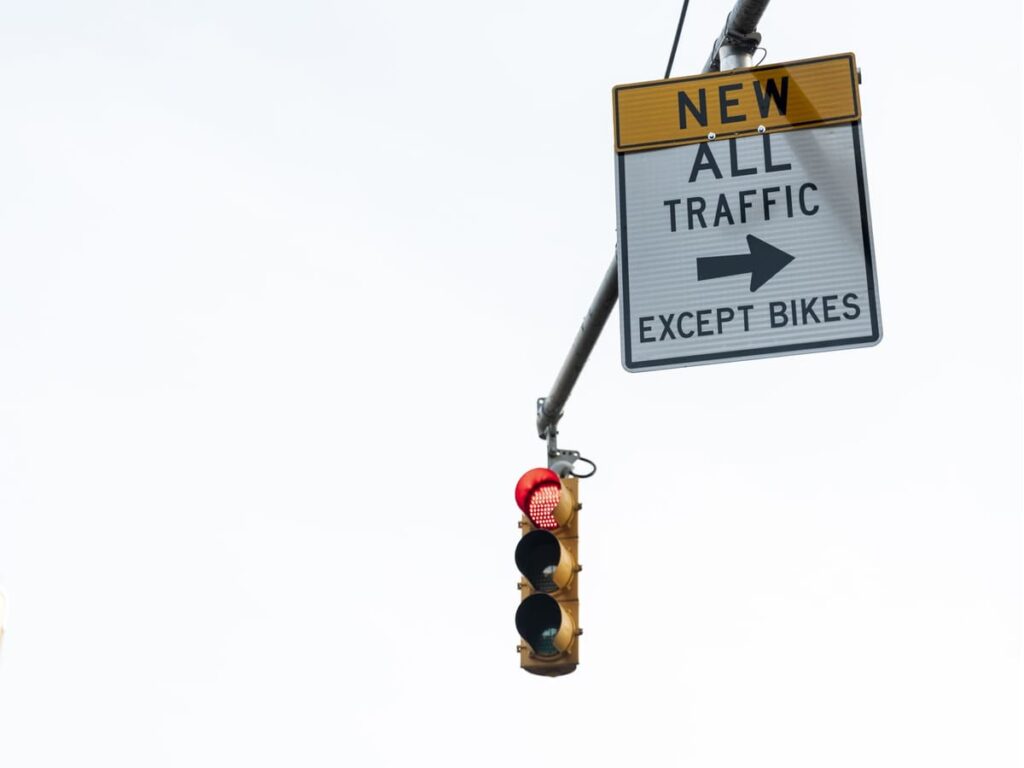
Peak hour lane closures make city traffic hard to manage. Roads get crowded fast, and the chance of accidents goes up. This is worse when big vehicles like buses or trucks are there.
- Morning peak hour traffic jams go up by 5.87%. Afternoon peak hour jams go up by 6.57%.
- Accidents with buses or trucks cause 6.03% more traffic jams than accidents with only cars.
Professional traffic control devices, like a lane use control sign, help drivers pay attention and stay safe. Studies show these signs and devices make people drive slower and help stop crashes.
À OPTRAFIC, we provide reliable Signes de contrôle de la circulation that are designed to manage congestion and improve safety during peak hour lane closures. Our high-quality signs, including lane use control and detour signs, are built to meet MUTCD standards and ensure clear communication with drivers. By using our signs, cities can reduce accidents, enhance traffic flow, and keep roads safer.
Principaux à retenir
- Closing lanes during busy hours can cause more traffic and crashes. Agencies should not close lanes when roads are crowded. This helps cars move better.
- Lane use control signs show drivers which lanes are open or closed. Clear signs help drivers understand and keep everyone safe.
- Dynamic lane control systems use tech to change lanes quickly. This helps control traffic and makes delays shorter.
- Drivers need to watch lane use control signs. If drivers follow these signs, they will not have to switch lanes suddenly. This keeps traffic smooth.
- Driving safely in construction zones is very important. Les conducteurs devraient ralentir, watch carefully, and obey all signs. Cela protège les conducteurs et les travailleurs.
Managing Peak Hour Lane Closures
What Are Peak Hour Lane Closures?
Peak hour lane closures happen when agencies shut down lanes on busy roads. This happens when lots of people are driving, like in the morning or afternoon. These times are when people go to work or school and then come home. Agencies have rules to decide when and how long to close lanes. They check traffic numbers, how many cars the road can hold, and what work needs to be done.
Lane closure rules help keep cars moving by not closing lanes during the busiest times. Agencies try not to close lanes on holidays or during big events so there are not more delays.
Some main reasons for closing lanes during peak hours are to make roads work better, accidents inférieurs, and fix things. The table below shows why states close lanes:
| Reason for Lane Closure | Number of States |
|---|---|
| To improve operations | 14 |
| To reduce accidents | 8 |
| For pavement structural considerations | 7 |
| Due to restrictions in construction zones | 5 |
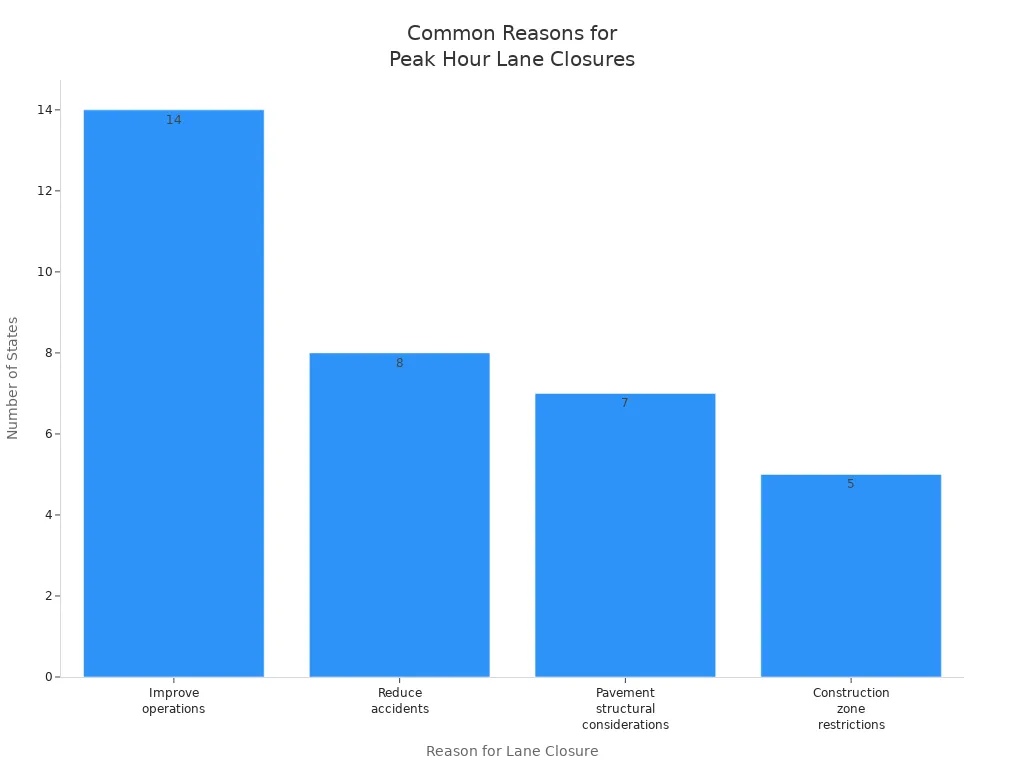
Other reasons are heavy traffic, safety worries, too much pollution, and keeping different vehicles apart.
Why Do Peak Hours Matter in Lane Closures?
Peak hours matter because there are more cars on the road. If a lane closes at these times, traffic jams and crashes can happen more. Agencies use traffic numbers to pick the best time to close lanes. They want to stop long lines and big delays.
- Lane closure rules often match when people drive and how many cars fit.
- Electronic tools help pick the best time to close lanes.
- Agencies look at how many cars, what work is needed, sécurité, et détours.
Lots of cars during peak hours can make long lines. Zipper merging helps cars move better and cuts down wait times. But closing lanes during busy times can still cause problems. Traffic jams slow everyone, make people stressed, and cost cities a lot of money in lost time and gas.
Good planning and the right signs help cars keep moving, even when lanes must close during the busiest times.
Challenges and Risks of Lane Closures
Traffic Congestion During Lane Closures
When lanes close during busy times, traffic jams happen a lot. Cars have to merge together, so everyone moves slower. Some drivers get upset or confused, which can make things worse. Many things cause traffic to back up when lanes close. The table below lists the main reasons:
| Cause of Congestion | Description |
|---|---|
| Bunching of vehicles | When cars slow down, they get closer together. This makes traffic move in waves. |
| Visual Effects on Drivers | Drivers get distracted or can’t see well. They may slow down to look at things. |
| Abrupt Changes in Highway Alignment | Sharp turns or work zones make drivers slow down. |
| Intended Interruption to Traffic Flow | Traffic lights and tollbooths make cars stop and wait. |
| Vehicle Merging Maneuvers | When cars have to merge, it can stop traffic from moving. |
Other things that cause problems are:
- Lane closures and detours make cars pile up.
- Delivering building materials during busy times makes jams worse.
- Workers driving to and from the site add more cars.
Construction work often messes up how traffic moves. Deliveries and extra cars from workers make it even harder.
Safety Risks and Mitigation Strategies
Lots of cars during lane closures make things less safe. More cars mean more chances for crashes. Drivers might not pay attention or get impatient, ce qui peut provoquer des accidents. The table below shows the biggest risks:
| Safety Risk | Description |
|---|---|
| Heavy Traffic | Lots of cars during lane closures can cause jams. |
| Increased Risk of Accidents | More cars mean more chances for crashes if drivers are distracted or impatient. |
Agencies use different ways to keep people safe:
- They follow traffic plans and put up signs and road markings.
- They use clear signs, cônes, et les barrières to show where to go.
- They put up electronic boards to give updates about closures and speed.
- They make drivers go slower in work zones.
- They use cameras and radar signs to check how fast cars go.
- They put up barriers that help protect workers and drivers if there is a crash.
Conseil: When drivers look at signs and drive slower, work zones are safer for everyone.
The Role of Lane Control Signs
Functions of Lane Use Control Signs
A lane use control sign tells drivers what lanes to use. It shows if a lane is open or closed. Parfois, it shows special rules for a lane. Drivers see these signs in busy places. They are common in construction zones and during rush hour. The signs might say things like “keep right” ou “merge left.” Certains signes disent “lane closed ahead.” Ces signes aident les conducteurs à savoir quoi faire. They keep traffic moving and safe.
Clear lane control signs help drivers make good choices. Drivers know when to change lanes or slow down. In Michigan, a dynamic lane merge system made work zones safer. It also helped stop aggressive driving. Signs with pictures help drivers who do not speak English well. The table below shows how these signs help drivers:
| Description des preuves | Résultats |
|---|---|
| Dynamic lane merge traffic control system in Michigan | Less aggressive driving, more safety, and less delay at work zone lane closures. |
| Comparison of graphic displays vs. text messages | Pictures on signs helped drivers find open lanes and helped those who do not speak English well. |
| VMS system in work zones | Signs made drivers change lanes sooner and keep more space between cars. This made them slow down and merge better. |
Conseil: Drivers who look at lane use control signs help keep roads safe and traffic smooth.
Dynamic Lane Control and Traffic Flow
Dynamic lane control uses technology to change lanes quickly. It helps during busy times or road work. Dynamic bus lanes help buses stay on time. They make travel times more steady, even with heavy traffic. Some cities use lane reversal. This means a lane changes direction to help more cars move.
- Dynamic lane use control changes lanes using real-time traffic.
- Lane reversal gives more space to the busy side.
- These systems help stop traffic jams and delays.
- They help use lanes better and fit more cars.
- Fewer crashes happen because drivers follow clear rules.
Dynamic lane control systems save money for cities. Cities do not need to build new roads as much. Smart traffic tools can cut travel times by up to 20%. Cities that use these systems have fewer crashes. Drivers follow rules better. This makes roads safer and less stressful for everyone.
Different Types of Lane Use Control Signs
Regulatory Lane Use Control Signs
Regulatory lane use control signs tell drivers what they must do in each lane. These signs help everyone follow the rules and keep traffic moving safely. Drivers see these signs at busy intersections, sur les autoroutes, and near work zones. Each sign has a clear message, so drivers know if they can turn, go straight, or use a special lane. Here is a table showing some common types and what they mean:
| Type de signe | Fonction |
|---|---|
| Turn Only Lanes Sign | Traffic may only move in the directions shown for each lane. |
| Straight Ahead Only Sign | No turns allowed; must drive straight ahead. |
| Right Turn Only Sign | All vehicles in this lane must only turn right. |
| Concurrent (Center) Left Turn | Two-way left turn lane for both directions. |
| Reversible Lane Control Sign | Shows when a lane is open for traffic in either direction. |
| VOM 2+ Signe | Only vehicles with 2 or more people can use this lane. |
| No Right/Left Turn Sign | Prohibits making a right or left turn. |
| No U-turn Sign | Prohibits making a U-turn. |
These signs help drivers make quick decisions and avoid confusion, especially during lane closures.
Warning Signs for Lane Closures
Warning signs for lane closures alert drivers to changes ahead. These signs use bright colors and shapes to catch attention. Most warning signs are diamond-shaped and easy to spot. They warn about road work, fermetures de voies, or other hazards. Drivers often see a series of these signs, starting with “ROAD WORK AHEAD” and ending with “END ROAD WORK.” The order helps drivers prepare for what is coming.
Conseil: Warning signs give drivers time to slow down and change lanes safely.
Guide and Detour Signs for Lane Management
Guide and Signes de détour play a big role during lane closures. These signs show drivers where to go when a lane is closed. They point out detours and help drivers find the best route around work zones. En suivant ces signes, drivers avoid getting stuck in traffic or making unsafe moves. Guide and detour signs keep traffic flowing and reduce stress for everyone on the road.
A lane use control sign, along with guide and detour signs, helps drivers stay informed and safe during busy times.
Understanding MUTCD Compliance
Key MUTCD Standards for Lane Closures
Le Manuel sur les dispositifs de contrôle de la circulation uniformes (Mutcd) gives rules for using lane use control signs when lanes close. These rules help keep people safe and traffic moving. When agencies follow these rules, drivers get clear directions and know what to do.
Here are some important MUTCD standards for lane use control signals:
| Standard | Description |
|---|---|
| 01 | Lane-use control signals must work the same way along the whole road. |
| 02 | Certain signal combinations cannot show at the same time over one lane. |
| 03 | A moving lane must end with a RED X or a YELLOW X, then a RED X. |
| 04 | When a GREEN ARROW changes to a WHITE TWO-WAY LEFT-TURN ARROW, a RED X must show in the other direction. |
| 05 | Manual control must be ready to override automatic systems. |
| 07 | Lane-use control signals should stay on unless told otherwise. |
Agencies implement lane-use control signals for several reasons: when multiple lanes change direction, when left turns are permitted during peak hours, when lane patterns are unconventional, in areas with a history of crashes, or when studies indicate they improve safety and traffic flow.
Drivers see these signals and know what to do:
- A steady DOWNWARD GREEN ARROW means the lane is open.
- A steady YELLOW X means get ready to leave the lane.
- A steady RED X means the lane is closed.
Following MUTCD standards helps drivers not get confused. It keeps everyone safer when lanes close.
The Importance of Reflective and Crashworthy Materials
MUTCD also says all traffic control devices, like lane control signs, must use reflective and crashworthy materials. These materials make signs easy to see, Même la nuit ou par mauvais temps. High-visibility materials bounce back headlights, so drivers can spot signs from far away. This is very important because almost half of all traffic deaths happen at night, even though fewer people drive after dark.
| Type d'exigence | Description |
|---|---|
| Accident | Devices must be safe if hit by a car, following national crash test standards. |
| Définition | ‘Crashworthy’ means the device passed crash tests like those in NCHRP Report 350. |
| Conformité | All devices must meet MUTCD rules. |
- Agencies must keep sign reflectivity at or above the minimum levels set by MUTCD.
Conseil: Reflective and crashworthy signs help drivers see changes ahead. They help protect everyone on the road, jour ou nuit.
Managing Traffic Flow During Lane Closures
Strategic Sign Placement for Optimal Flow
Traffic managers know sign placement is very important. Good sign placement lets drivers see changes early. When drivers see signs soon, they have more time to react. This helps traffic keep moving and stops sudden braking.
They use different signs for different jobs. Some signs warn about lane closures ahead. Other signs show drivers where to go or which lane to use. Signs placed far from the work zone give drivers time to merge. Par exemple, un “Lane fermé devant” sign works best when it is far from the closure. Drivers can then change lanes without hurrying.
Managers also use cônes et barrières to help guide cars. These tools show drivers the right way to go. When signs and cones are used together, traffic moves better. Drivers feel less lost and more sure of what to do.
Conseil: Clear signs that come early help everyone stay calm and avoid last-minute lane changes.
Real-Time Updates and Dynamic Signage Solutions
Modern roads use smart signs to give drivers new information. These signs can change messages as things happen on the road. They help drivers skip traffic jams and find the best way to go.
Here are some common types of dynamic signs and how they help:
| Type de signe | Comment ça aide les conducteurs |
|---|---|
| Full Matrix VMS | Gives real-time updates about lane closures and detours. Drivers know what to expect. |
| Signes de messages modifiables | Shows current road conditions. Drivers can avoid blocked paths and heavy traffic. |
| Dynamic Message Signs | Adapts to new situations. Can warn about emergencies or sudden changes. |
These signs use sensors and cameras to watch traffic. Quand quelque chose change, the signs update right away. Drivers see new messages and can make quick choices. This keeps traffic moving and helps stop accidents.
Note: Real-time updates from dynamic signs make roads safer and less stressful for everyone.
Case Studies of Successful Lane Closure Management
New York: Lane Closure Strategies
New York City has some of the busiest roads in the country. City leaders wanted to make streets safer and less crowded. They focused on the congestion relief zone. They started new lane closure strategies. These strategies used clear lane use control signs and real-time updates. Traffic managers also tried to lower the number of cars in busy areas.
Here is what happened after the new plans began:
- Traffic deaths in the congestion relief zone went down by 40% de l'année dernière.
- No drivers died in the zone after the changes.
- The city wanted to cut 80,000 trips each day in the congestion relief zone.
- Leaders thought these changes would lower traffic by 10% in the area.
These results show that smart planning and good signs help a lot. Drivers felt safer, and the streets were less crowded. People could get where they needed to go with less stress.
Los Angeles: Traffic Flow Optimization During Lane Closures
Los Angeles also has heavy traffic and many lane closures. City planners used advanced traffic control devices and dynamic signs. They wanted to keep cars moving and lower pollution during big construction projects.
The table below shows how Los Angeles measured success:
| Ville | Travel Time Reduction | Emissions Reduction |
|---|---|---|
| Los Angeles | 12% | 3-4% |
Travel times went down by 12%. Emissions dropped by 3-4%. These numbers mean drivers spent less time in traffic and the air got cleaner. Los Angeles showed that using smart signs and real-time updates helps everyone on the road.
When cities use the right lane closure strategies, safety and traffic flow get better for everyone.
Best Practices for Lane Use Control Signage
Designing Effective Lane Control Signs
Good lane control signs help drivers make fast, safe choices. Cities use special rules when they design these signs. These rules help make sure each sign is easy to see and read. The table below lists the main design rules:
| Principe de conception | Description |
|---|---|
| Visibilité | Signal faces must be clearly visible for 700 m (2,300 ft) under normal conditions. |
| Placement | Signals should be located in a straight line across the roadway, approximately at right angles to the roadway alignment. |
| Hauteur | The bottom of the signal housing should be between 4.6 m (15 ft) et 5.8 m (19 ft) above the pavement. |
| Signal Indications | Each lane must have a DOWNWARD GREEN ARROW and a RED X symbol for reversible lanes. |
| Coordination | All signals must operate uniformly to prevent showing prohibited combinations of signals. |
When cities use these rules, drivers can see signs from far away. Drivers know which lane to pick and when to switch lanes. This keeps traffic moving and helps stop crashes.
Conseil: Signs that are clear and easy to find help keep roads safe for everyone.
Leveraging Intelligent Traffic Management Systems
Smart traffic systems make lane control signs work even better. These systems use sensors and cameras to watch traffic as it happens. They gather information about car speeds and where jams start. The system can then change signals to fit what is going on.
- IoT sensors and cameras check how fast cars go and watch traffic.
- The system uses this information to change green lights for busy lanes.
- Adaptive signal timing helps stop traffic jams during busy hours.
- Drivers wait less and traffic moves more smoothly.
Cities that use these smart systems have fewer slowdowns. Drivers get updates right away and can trust the signs to help them stay safe.
Tips for Drivers During Lane Closures
How to Read Lane Use Control Signs Effectively
Drivers often see many signs during lane closures, but not all signs mean the same thing. A lane use control sign gives clear directions about which lanes are open or closed. Drivers should look for arrows, X symbols, or words like “Voie fermée” ou “Fusionner à gauche.” These signs usually hang above the road or stand on the roadside.
Here are some quick tips for reading these signs:
- Check the color and shape. Green arrows mean go, red X means stop or do not enter.
- Read the message early. This gives more time to change lanes safely.
- Watch for flashing lights or electronic messages. These often show real-time changes.
- Follow the arrows. They point to open lanes or show which way to merge.
Conseil: Drivers who pay attention to lane use control signs can avoid last-minute lane changes and help keep traffic moving.
Safe Driving Tips in Construction Zones
Construction zones can feel confusing, surtout pendant les heures de bien cadran. Drivers need to stay alert and follow a few simple rules to keep everyone safe.
- Slow down when entering a work zone. Speed limits often drop, and workers may be close to the road.
- Keep a safe distance from the car ahead. Sudden stops happen often in these areas.
- Avoid distractions. Put away phones and focus on the road.
- Watch for workers, équipement, and new traffic patterns.
- Obey all posted signs and signals, even if the road looks clear.
| Safety Tip | Pourquoi ça compte |
|---|---|
| Ralentir | Reduces crash risk and saves lives |
| Rester en état d'alerte | Helps spot changes and hazards early |
| Follow signs | Keeps traffic flowing smoothly |
Note: Safe driving in construction zones protects drivers, ouvriers, and everyone else on the road.
Managing peak hour lane closures needs good planning and teamwork. Traffic managers use a lane use control sign to help drivers. They put detour signs at each turn so drivers know where to go. Les matériaux réfléchissants facilitent les panneaux la nuit. Signs in warning areas tell drivers about changes ahead. Transition and buffer spaces help keep people safe. Real-time updates and following MUTCD rules help traffic move better. Cities that use these ideas have safer roads and fewer traffic jams.
OPTRAFIC understands the importance of clear and effective signage during peak hour lane closures. We provide high-quality, MUTCD-compliant traffic signs designed to help guide drivers safely and efficiently through detours, transitions, and buffer zones. Notre durable, reflective signs ensure visibility day and night, keeping traffic flowing smoothly and safely. Whether you’re managing peak hour closures or planning a long-term traffic control strategy, OPTRAFIC offers the signage solutions you need for success. Contactez-nous aujourd'hui to learn how we can support your traffic management efforts with reliable, cost-effective products.
FAQ
What is a lane use control sign?
A lane use control sign tells drivers which lanes they can use. It shows if a lane is open, closed, or has special rules. These signs help keep traffic moving and make roads safer.
Why do cities close lanes during peak hours?
Cities close lanes to fix roads, make improvements, or keep people safe. Parfois, they must work during busy times. They use signs and smart tools to help drivers avoid long delays.
How do dynamic signs help during lane closures?
Dynamic signs give real-time updates. They show drivers which lanes are open or closed. These signs can change messages fast, so drivers always know what to do.
What does MUTCD compliance mean for road signs?
MUTCD compliance means the signs follow national rules. Ces règles garantissent que les panneaux sont faciles à voir, comprendre, Et sûr pour tout le monde. Cities use these standards to help drivers stay safe.
How can drivers stay safe in construction zones?
Les conducteurs devraient ralentir, watch for signs, and keep a safe distance from other cars. They should stay alert and avoid distractions. Following these tips helps protect everyone in the work zone.
